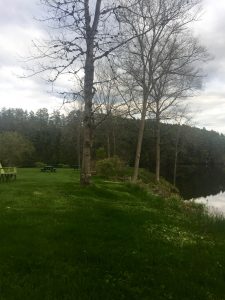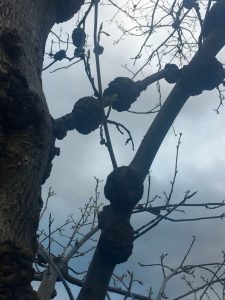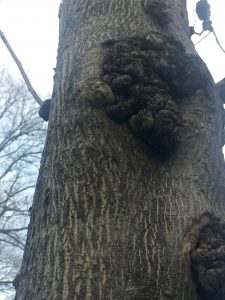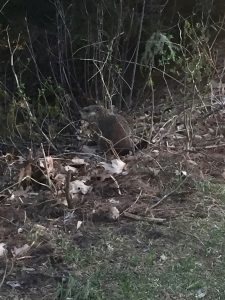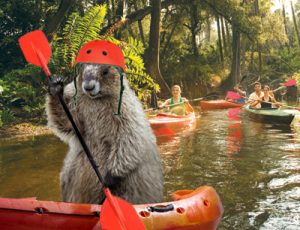Does anyone know a dermatologist in the Hanover area? Because this tree needs a recommendation!
While observing nature along the Vermont side of the Connecticut river, I noticed that a tree with wart-like, spherical bumps all over its trunk and branches was leafless while most others trees nearby were thriving. I have seen similar looking trees before and have wondered what those bumps are and what causes them. I decided to do some research to find out (from experience, I would advise against putting “wart-like tree bumps” in the google search bar unless you are ready to see some questionable images of a very rare “tree man illness”). At first, I thought the bumps on the tree could be characteristic of a specific species of tree, but after my research I found that these bumps are called “burls” or “burrs” and can appear on many different species of trees.
Interestingly, scientists still have much to learn about what causes burls to form on a tree. Evidenced theories include insect infestation, fugal infection, genetic predisposition, and environmental trauma. While these issues may lead to the formation of burls, burls themselves do not harm the tree. However, the presence of burls can provide some explanation for a tree’s poor health.
The specific tree that I saw had small and medium-sized burls. That the tree had burls and was leafless at this point in the spring led me to believe that it is or has recently been experiencing some sort of issue. I cannot identify the cause of the burls, but I am interested in inspecting this tree throughout my time here at Dartmouth. Perhaps in a few years the tree will be thriving again!
Don’t warty, be happy!
-Lauren Archer
http://wonderopolis.org/wonder/what-is-a-burl

